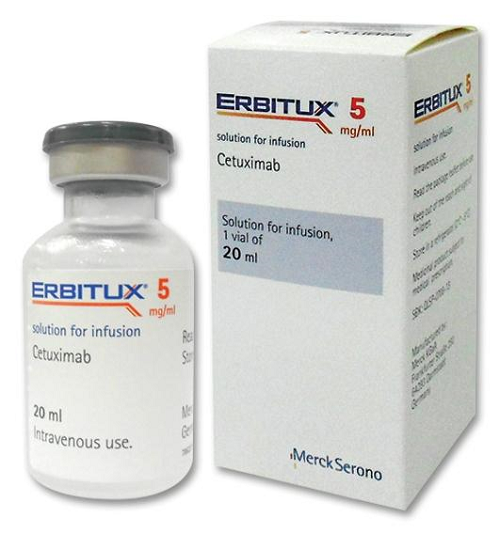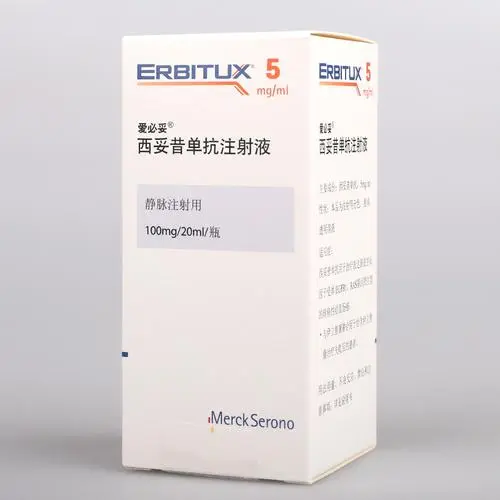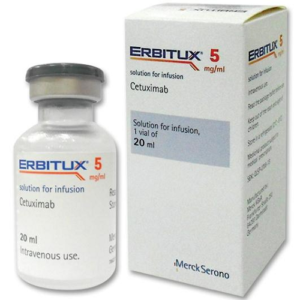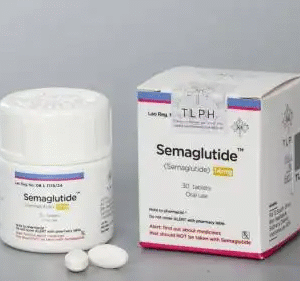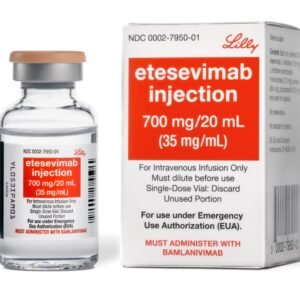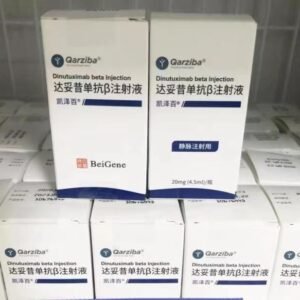Cetuximab Solution for Infusion
Function and indication: This product is used to treat metastatic colorectal cancer with wild-type RAS gene: · Combined with FOLFOX or FOLFIRI regimen for first-line treatment. · Combined with irinotecan for patients who have failed irinotecan-containing treatment. This product is used to treat squamous cell carcinoma of the head and beard: · Combined with platinum and fluorouracil chemotherapy for first-line treatment of recurrent and/or metastatic disease.
Usage and Dosage: This product must be used under the guidance of a physician with experience in the use of anti-tumor drugs. During the medication process and within 1 hour after the end of the medication, the patient’s condition must be closely monitored, and resuscitation equipment must be equipped. Dosimetry At least 1 hour before the first infusion of this product, the patient must receive preventive medication with antihistamines and corticosteroids. It is recommended that in subsequent treatment, all indications for the above preventive medications should be given to the patient before each use of this product. This product is administered once a week. The initial dose is 400mgm2 based on body surface area, and the weekly dose is 250mgm2 based on body surface area thereafter. Colorectal cancer There is evidence that wild-type RAS (KRAS and NRAS) genetic status is a prerequisite for initial treatment with this product. And the genetic status of KRAS (exons 2, 3 and 4) and NRAS (exons 2, 3 and 4) must be detected by experienced laboratories using validated methods (see [Precautions] and [Clinical Trials] for details). For the dosage and recommended dose adjustment of chemotherapy drugs used in combination with this product, please refer to the instructions for use of such drugs. The use of this type of drug must be started 1 hour after the end of the infusion of this product. It is recommended that the course of this product continue until the patient’s disease progresses. Head and neck squamous cell carcinoma This product is used in combination with platinum-based chemotherapy drugs for the treatment of recurrent and/or metastatic head and neck squamous cell carcinoma, followed by continued maintenance therapy with this product until disease progression (see [Pharmacology and Toxicology] and [Clinical Trials]). The use of chemotherapy drugs must be started 1 hour after the end of the infusion of this product. Usage This product can be administered intravenously using an infusion pump, gravity drip or syringe pump (see “Operation Guide” for details on usage). The first dose should be given slowly, and the drip rate should not exceed 5 mg/mi (see [Precautions] for details). The recommended drip time is 120 minutes, and the subsequent weekly drip time is 60 minutes, and the drip rate should not exceed 10 mg/min.
Adverse reactions:
The main adverse reaction of cetuximab is skin reaction, with an incidence of more than 80%. About more than 10% of patients have hypomagnesemia, more than 10% of patients have mild to moderate infusion reactions, and more than 1% of patients have severe infusion reactions. No gender difference has been observed clinically for this product. The frequency terms used in the future have the following definitions: very common (≥1/10), common (≥1/100, <1/10), occasional (≥1/1000, <1/100), rare (≥1/10000, <1/1000), very rare (<1/10000), and the frequency of occurrence is unknown (cannot be estimated from the available data). 1. Nervous system disorders: (1) Common: headache. (2) Frequency unknown: Aseptic meningitis. 2. Eye disorders: (1) Common: Conjunctivitis. (2) Rare: Ophthalmitis, keratitis. 3. Respiratory, thoracic and mediastinal disorders: Rare: Pulmonary embolism. 4. Gastrointestinal disorders: Common: Diarrhea, nausea, vomiting. 5. Metabolic and nutritional disorders: (1) Very common: Hypomagnesemia. (2) Common: Dehydration, especially dehydration caused by diarrhea and mucositis; hypocalcemia; loss of appetite, and possible weight loss. 6. Vascular system disorders: Rare: Deep vein thrombosis. 7. Hepatobiliary dysfunction: Very common: Elevated liver enzyme levels. 8. Skin and subcutaneous tissue disorders: (1) Very common: Skin toxicity. (2) Frequency unknown: Secondary infection of skin lesions. 9. Infusion reactions: (1) Very common: Mild to moderate infusion reactions, including fever, chills, dizziness or dyspnea, mainly occurring during the first infusion. (2) Common: severe infusion reaction, fatigue.
Contraindications:
1. Patients with known severe hypersensitivity reaction (grade 3 or 4) to cetuximab are contraindicated for this product. 2. For the contraindications of irinotecan, please refer to its instructions for use.
Share:
Products
Our offers
Health Classification
Let us work together to protect precious health

